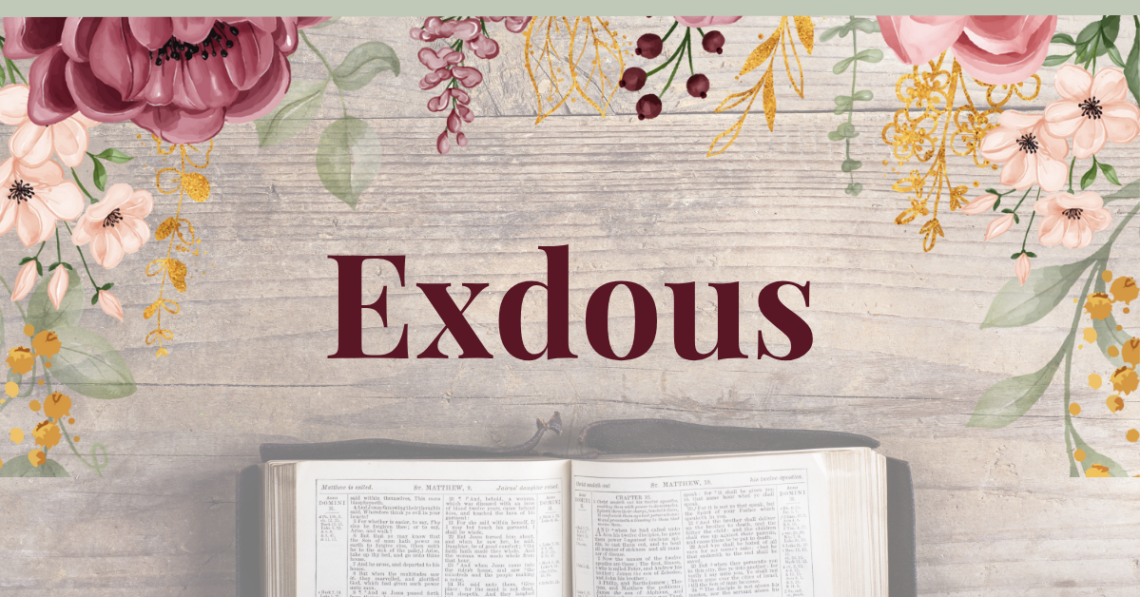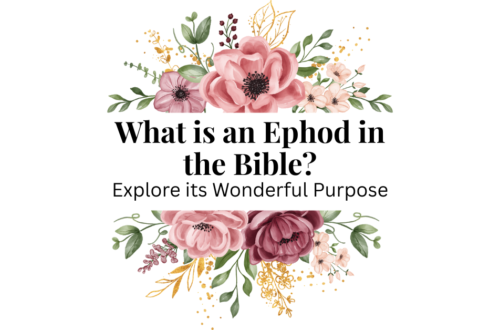The Book of Exodus marks a significant turning point in the Bible. It tells the story of God’s deliverance of the Israelites from slavery in Egypt. Therefore, establishing them as His chosen people and setting the stage for His covenant with them. But Exodus is not just a historical narrative. It is also filled with shadows and types that point to Jesus Christ. In this post, we’ll explore the key themes and structure of Exodus, its significance, and how Jesus can be seen throughout its pages.
Background of Exodus
So, the word “Exodus” comes from the Greek word ἔξοδος (exodos), meaning “departure” or “exit.” The book centers on the departure of the Israelites from Egypt, where they had been enslaved for over 400 years. Exodus also focuses on God’s covenant with Israel at Mount Sinai, the giving of the Law, and the instructions for building the tabernacle. Traditionally attributed to Moses, Exodus serves as both a historical account and a theological exploration of God’s plan for His people.
Exodus is divided into two main sections:
- The Deliverance from Egypt (Chapters 1–18)
- The Giving of the Law and Covenant (Chapters 19–40)
So, these sections highlight God’s faithfulness in rescuing His people. And, His desire for a relationship with them, setting the foundation for future redemption through Jesus.
The Deliverance from Egypt (Exodus 1–18)
The first part of Exodus focuses on God’s deliverance of the Israelites from slavery and the miraculous events that led up to their liberation. Even in this narrative of deliverance, we see powerful images that point to Christ.
The Oppression of Israel and the Birth of Moses (Chapters 1–2)
The Israelites are oppressed in Egypt, and God raises up Moses to be their deliverer. Just as Moses was raised up to rescue the Israelites, Jesus came to rescue humanity from the oppression of sin.
The Plagues and the Passover (Chapters 7–12)
God sends ten plagues to persuade Pharaoh to let the Israelites go, culminating in the Passover. Therefore, the Israelites are instructed to sacrifice a lamb and place its blood on their doorposts to protect them from the final plague. This points to Jesus, the “Lamb of God” (John 1:29), whose sacrificial death provides protection from God’s judgment for all who trust in Him.
The Crossing of the Red Sea (Chapter 14)
As the Israelites escape Egypt, they face the impossible task of crossing the Red Sea. But God parts the waters, allowing them to pass through on dry ground. This miraculous event points to baptism, as seen in 1 Corinthians 10:1-2, where Paul says the Israelites were “baptized into Moses” as they passed through the sea. So, just as the Israelites were delivered through the waters, Christians are delivered from sin through baptism and faith in Jesus.
The Giving of the Law and Covenant (Exodus 19–40)
After their deliverance, the Israelites are brought to Mount Sinai, where God establishes His covenant with them and gives them the Law. Therefore, this section emphasizes God’s holiness and His desire to dwell among His people.
The Covenant at Sinai (Chapters 19–24)
God gives the Ten Commandments to Moses, forming the foundation of His covenant with Israel. This covenant establishes God’s law as a guide for His people, pointing to the need for a Savior. So, just as the Israelites needed the Law to know how to live, we need Jesus to fulfill the Law and provide salvation (Matthew 5:17).
The Tabernacle and God’s Presence (Chapters 25–31)
God gives instructions for building the Tabernacle, where His presence would dwell among His people. The Tabernacle points to Jesus, who is the ultimate dwelling place of God among us (John 1:14). Through His incarnation, Jesus becomes the true temple, the place where God and humanity meet.
The Golden Calf and God’s Mercy (Chapters 32–34)
While Moses is on the mountain, the people build a golden calf to worship, showing their disobedience. Yet, despite their sin, God extends mercy and renews His covenant with them. This foreshadows Christ’s ultimate act of mercy on the cross, offering forgiveness to those who repent.
Where You Can See Jesus in Exodus
In the Birth of Moses: Moses was born to be the deliverer of Israel, and in a similar way, Jesus was born to deliver humanity from sin. Both were divinely chosen and sent to rescue God’s people.
Passover Lamb: The sacrificial lamb of the Passover, whose blood protected the Israelites from the judgment of death, points directly to Jesus, the Lamb of God, whose blood covers the sins of those who believe in Him.
Red Sea Crossing: The crossing of the Red Sea represents a form of salvation. In the same way, baptism symbolizes the believer’s deliverance from sin, through the work of Jesus.
Ten Commandments: The Law given to Moses shows God’s desire for holiness and obedience. While we cannot keep the Law perfectly, Jesus fulfilled it on our behalf and offers us righteousness through faith in Him.
Tabernacle: The Tabernacle served as the dwelling place of God. Therefore, Jesus is the ultimate Tabernacle, as God dwells in Him, and through His sacrifice, He makes a way for believers to enter into God’s presence.
Golden Calf Incident: Despite Israel’s rebellion, God’s mercy shines through. Jesus, through His sacrifice, provides mercy and forgiveness for all who turn to Him, no matter their past mistakes.
Key Themes in Exodus
- God’s Deliverance: Exodus demonstrates that God is a deliverer who rescues His people from oppression. Jesus fulfills this by delivering us from the power of sin.
- God’s Holiness: The giving of the Law emphasizes the holiness of God, showing the need for a perfect Savior to meet God’s standards.
- Covenant and Relationship: The covenant made with Israel points forward to the new covenant in Christ, where God desires a relationship with His people.
- God’s Presence: The Tabernacle points to the presence of God with His people. Through Jesus, God is with us in a more profound way, dwelling in us through the Holy Spirit.
How We Can Apply Exodus to Our Lives Today
The Book of Exodus provides powerful lessons that are still relevant for us today. Here are some ways we can apply its truths:
- Trusting in God’s Deliverance: So, just as God delivered the Israelites from slavery, He offers deliverance to us from the slavery of sin through Jesus. We can trust in God’s ability to rescue us from any situation.
- Recognizing the Need for a Savior: The Law given to Israel highlights humanity’s inability to live up to God’s standards. It reminds us that we need Jesus, who perfectly fulfilled the Law on our behalf.
- Seeking God’s Presence: The Tabernacle showed God’s desire to dwell with His people. Through Jesus, we now have access to God’s presence at all times. We can live with the awareness that God is with us through the Holy Spirit.
- Responding to Mercy: Just as God showed mercy to Israel after their sin, we are called to receive His mercy in Christ. When we fall short, we can come to God, knowing that His forgiveness is available to us through Jesus.
- Living in Covenant with God: The covenant with Israel points to our new covenant in Christ. We are called to live in relationship with God, following His commands and walking in His grace.
Conclusion
The Book of Exodus is not just an ancient story of liberation—it’s a story that points forward to Jesus. From the Passover lamb to the Red Sea crossing, from the Law to the Tabernacle, Exodus foreshadows Christ’s work of salvation. So, Jesus is the true and better deliverer, the perfect fulfillment of the Law, and the ultimate presence of God among us. As you read Exodus, look for these glimpses of Jesus and be reminded of the incredible redemption that He brings to our lives.
Call to Action
So, I’d love to hear your thoughts on the Book of Exodus and how you see Jesus in it! How does Exodus deepen your understanding of God’s plan of salvation? Share your thoughts in the comments below. Ask any questions you might have about how the Old Testament points to Jesus. And if this post was helpful, please share it with others who would benefit from it. Let’s continue to grow in our understanding of the Bible together!





